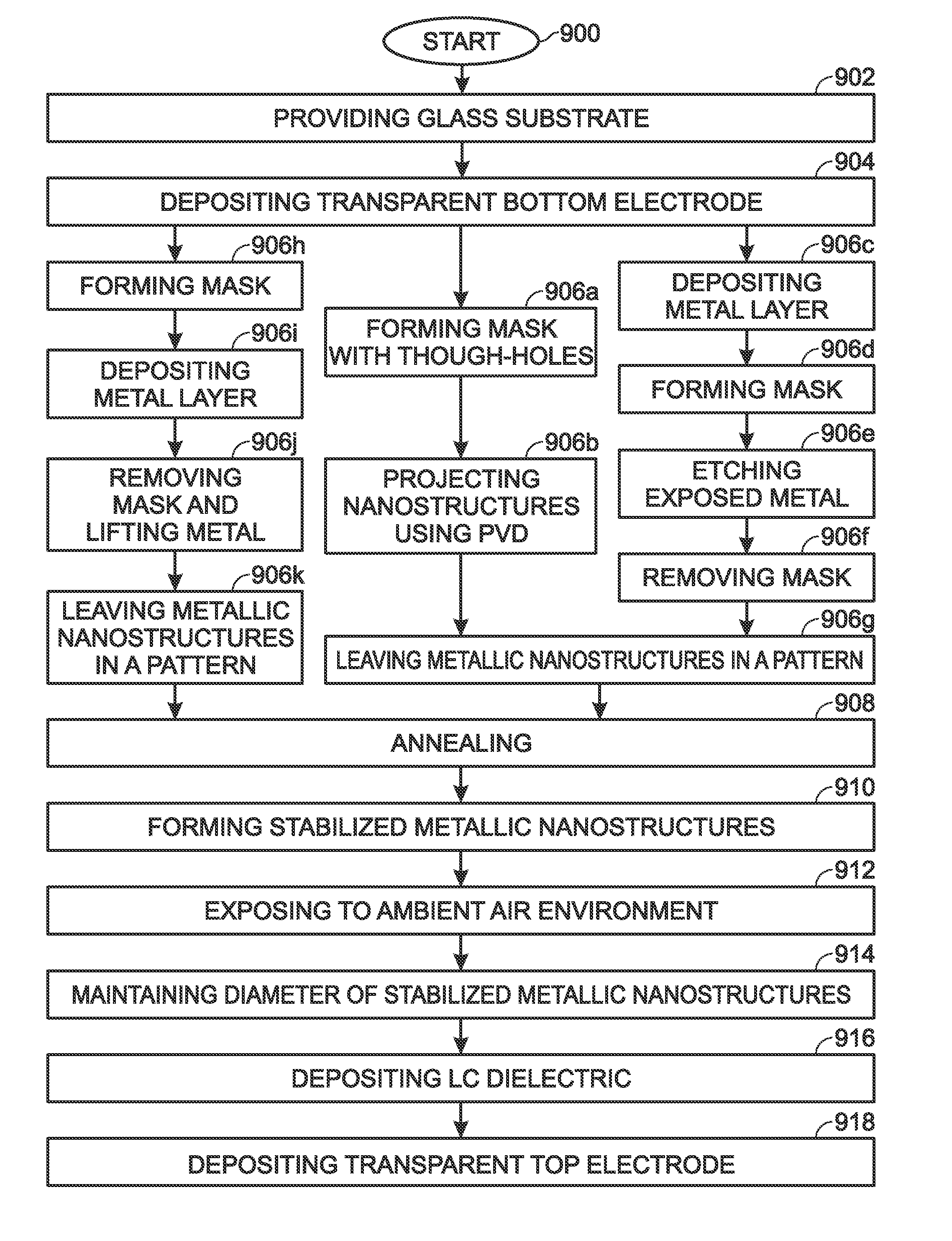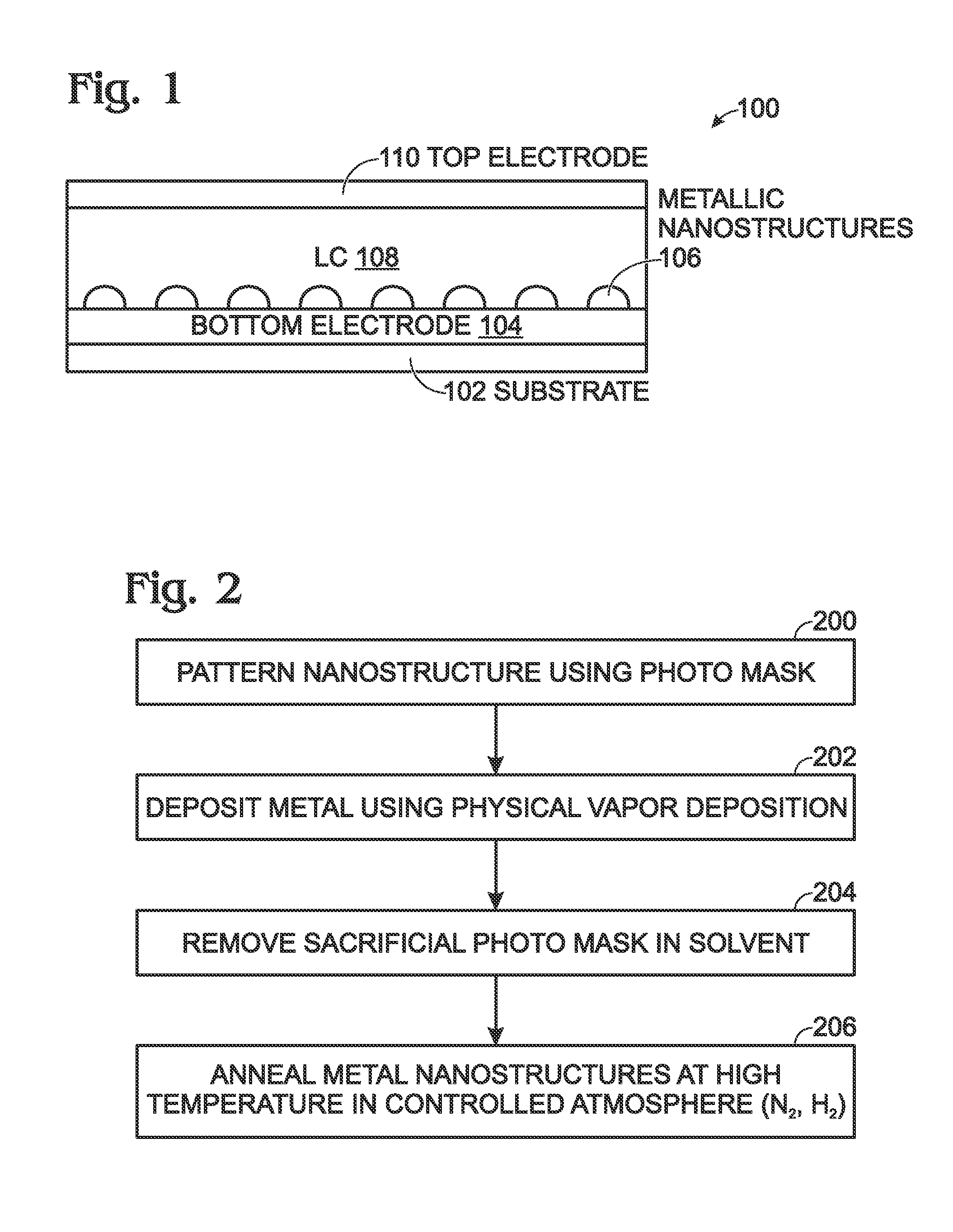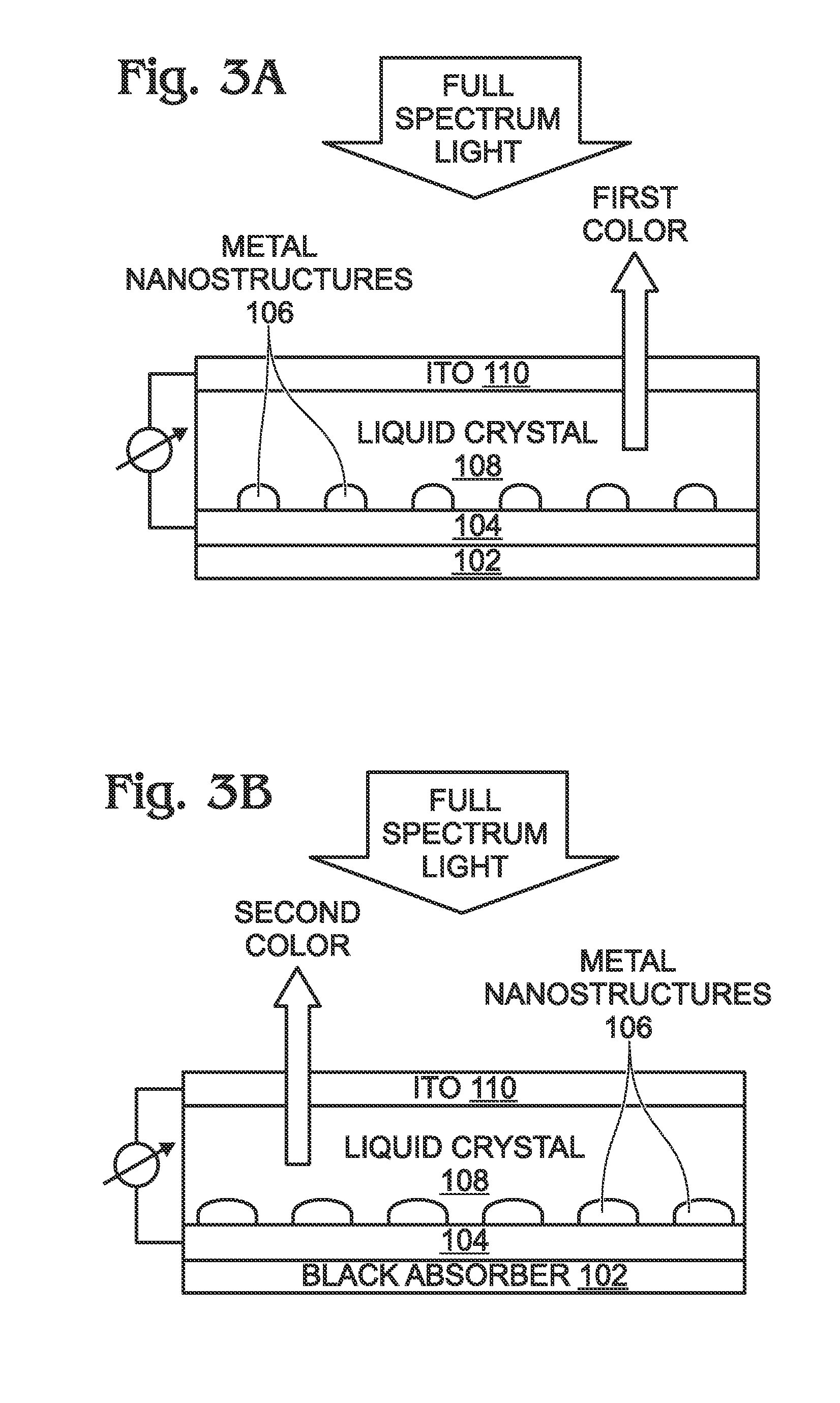Method for improving metallic nanostructure stability
a nanostructure and stability technology, applied in the field of plasmonic displays, can solve the problems of mechanical fracture of materials, large defects and dislocation of metal atoms, etc., and achieve the effects of reducing the chemical degradation of metal oxidation, high gibbs free surface energy, and large surface-to-volume ratio
- Summary
- Abstract
- Description
- Claims
- Application Information
AI Technical Summary
Benefits of technology
Problems solved by technology
Method used
Image
Examples
Embodiment Construction
[0031]FIG. 1 is a partial cross-sectional view of a plasmonic display with stable metallic nanostructures. The display 100 comprises a glass substrate 102. A transparent bottom electrode 104, such as an indium tin oxide (ITO) material overlies the glass substrate 102. Other transparent conductive materials are well-known. In some aspects not shown, a basecoat may be interposed between the substrate and bottom electrode. Annealed metallic nanostructures 106 overlie the transparent bottom electrode 104. As explained in more detail below, the metallic nanostructures 106 generally have a dome shape. As noted in parent application Ser. No. 12 / 635,349, some of the benefits of dome-shaped nanoparticles are a larger wavelength tuning range, by maximizing the effective refractive tuning range. Further, there is little angle dependence in the reflected color due to isotropic electric field distribution.
[0032]Some exemplary metallic nanostructure materials include Ag, Au, and Al. However, othe...
PUM
| Property | Measurement | Unit |
|---|---|---|
| diameter | aaaaa | aaaaa |
| diameter | aaaaa | aaaaa |
| diameter | aaaaa | aaaaa |
Abstract
Description
Claims
Application Information
 Login to View More
Login to View More - R&D
- Intellectual Property
- Life Sciences
- Materials
- Tech Scout
- Unparalleled Data Quality
- Higher Quality Content
- 60% Fewer Hallucinations
Browse by: Latest US Patents, China's latest patents, Technical Efficacy Thesaurus, Application Domain, Technology Topic, Popular Technical Reports.
© 2025 PatSnap. All rights reserved.Legal|Privacy policy|Modern Slavery Act Transparency Statement|Sitemap|About US| Contact US: help@patsnap.com



